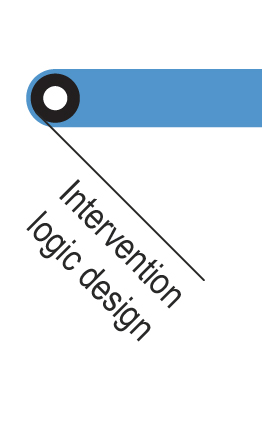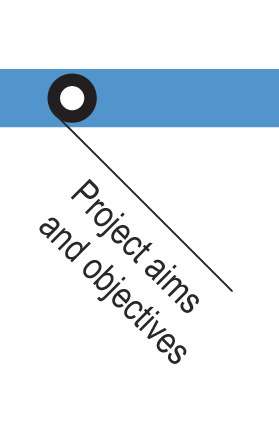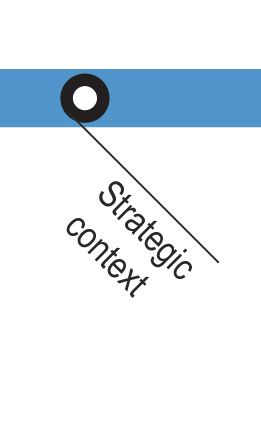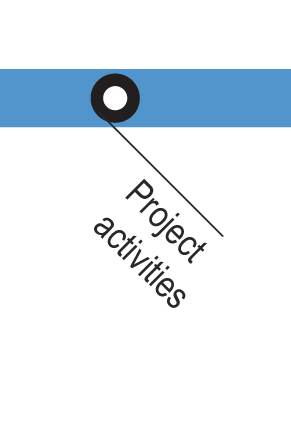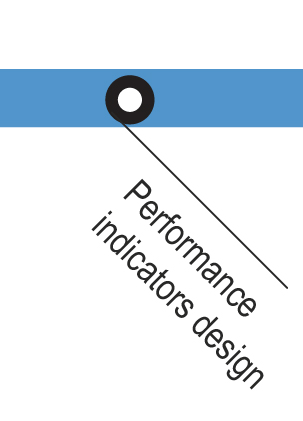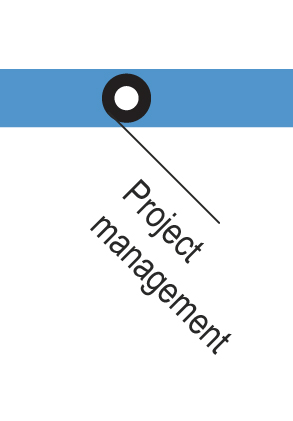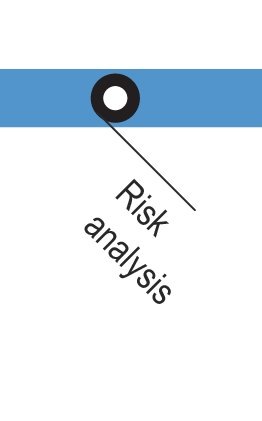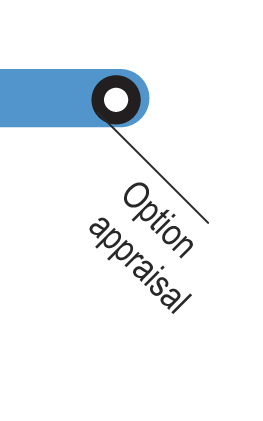SPECIFYING PROJECT ACTIVITIES is about specifying the range and type of activities the project will encompass. Project activities should relate very closely to the aims and objectives of the project and should have a direct impact on the needs and problems identified.
Just like the aims and objectives of a project, its distinct activities need to be designed following the SMART approach (specific, measurable, actionable/achievable, realistic, and time-bound).
The design of project activities should include at least to some extent the participation of representatives from the project's target groups and/or organisations working with the target groups to ensure suitability and appropriateness of approach.
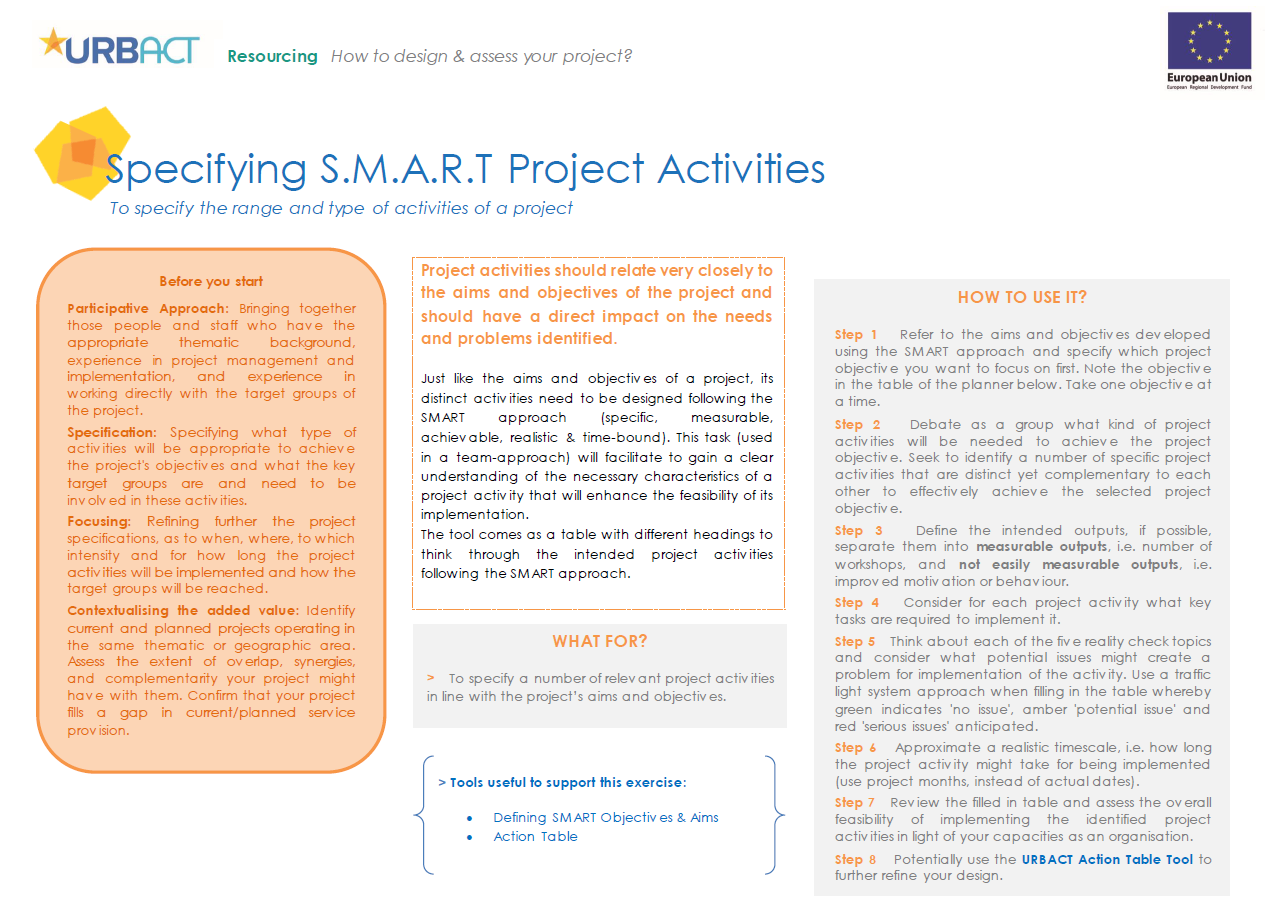
The tool consists of a table that includes the relevant headings to think through the intended project activities following the SMART approach.
| Who is this tool for ? | When should the tool be used? |
| Project Design Team | After you have defined the aims and objectives of your project. |
Click on the stations to navigate throught the Project line!
Key challenges of the step
- To achieve a good balance between an under- and over-ambitious project in terms of its complexity, longitude, and achievability.
- To design project activities that are attractive to participate in and that inspire people to get involved in.
- To design project activities that have a direct and measurable effect on the identified issues, needs and problems.
- To design project activities that are sustainable in the long-term and are not grant-dependent for ever.
Main risks
- One of the main risks is that the designed project activities make sense in theory, but might encounter substantial legal, administrative, or practical issues in implementation. Checks with relevant colleagues or their inclusion in the design workshop is advisable.
Helpful tips
- Work in collaboration with the relevant staff that have experience in working with the target groups or subject matter of your project and/or with representatives from the target groups or thematic experts themselves. This will ensure that your project is designed realistically and that you are aware of specific requirements or barriers the target group/s or your activities might encounter during implementation.
- Consider joining up with other organisations that are working in the same thematic or geographic area of your project and that could complement the capacities of your organisation well. This often creates synergies and efficiencies in project delivery.
- Ensure that your project activities add value to already existing projects, either by building effectively on previously successful projects or by introducing new approaches and perspectives.
- Explore how other cities in your country and in Europe have dealt with similar issues and what type of activities they have implemented. Learn from their experience.
-
m3_4_specifying_smart_project_activities_0.pdf(PDF, 593Ko)


